Involvement of Histone Lysine Methylation in p21 Gene Expression in Rat Kidney In Vivo and Rat Mesangial Cells In Vitro under Diabetic Conditions
- PMID: 27652271
- PMCID: PMC5019898
- DOI: 10.1155/2016/3853242
Involvement of Histone Lysine Methylation in p21 Gene Expression in Rat Kidney In Vivo and Rat Mesangial Cells In Vitro under Diabetic Conditions
Abstract
Diabetic nephropathy (DN), a common complication associated with type 1 and type 2 diabetes mellitus (DM), characterized by glomerular mesangial expansion, inflammation, accumulation of extracellular matrix (ECM) protein, and hypertrophy, is the major cause of end-stage renal disease (ESRD). Increasing evidence suggested that p21-dependent glomerular and mesangial cell (MC) hypertrophy play key roles in the pathogenesis of DN. Recently, posttranscriptional modifications (PTMs) have uncovered novel molecular mechanisms involved in DN. However, precise regulatory mechanism of histone lysine methylation (HKme) mediating p21 related hypertrophy associated with DN is not clear. We evaluated the roles of HKme and histone methyltransferase (HMT) SET7/9 in p21 gene expression in glomeruli of diabetic rats and in high glucose- (HG-) treated rat mesangial cells (RMCs). p21 gene expression was upregulated in diabetic rats glomeruli; chromatin immunoprecipitation (ChIP) assays showed decreased histone H3-lysine9-dimethylation (H3K9me2) accompanied with enhanced histone H3-lysine4-methylation (H3K4me1/3) and SET7/9 occupancies at the p21 promoter. HG-treated RMCs exhibited increased p21 mRNA, H3K4me level, SET7/9 recruitment, and inverse H3K9me, which were reversed by TGF-β1 antibody. These data uncovered key roles of H3Kme and SET7/9 responsible for p21 gene expression in vivo and in vitro under diabetic conditions and confirmed preventive effect of TGF-β1 antibody on DN.
Figures
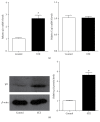
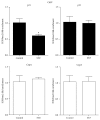

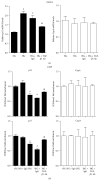
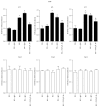
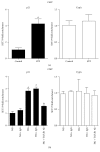
Similar articles
-
Histone Lysine Methylation in TGF-β1 Mediated p21 Gene Expression in Rat Mesangial Cells.Biomed Res Int. 2016;2016:6927234. doi: 10.1155/2016/6927234. Epub 2016 May 9. Biomed Res Int. 2016. PMID: 27247942 Free PMC article.
-
Dysregulation of histone H3 lysine 27 trimethylation in transforming growth factor-β1-induced gene expression in mesangial cells and diabetic kidney.J Biol Chem. 2019 Aug 23;294(34):12695-12707. doi: 10.1074/jbc.RA119.007575. Epub 2019 Jul 2. J Biol Chem. 2019. PMID: 31266808 Free PMC article.
-
Involvement of p300/CBP and epigenetic histone acetylation in TGF-β1-mediated gene transcription in mesangial cells.Am J Physiol Renal Physiol. 2013 Mar 1;304(5):F601-13. doi: 10.1152/ajprenal.00523.2012. Epub 2012 Dec 12. Am J Physiol Renal Physiol. 2013. PMID: 23235480 Free PMC article.
-
SET7, a lysine-specific methyl transferase: An intriguing epigenetic target to combat diabetic nephropathy.Drug Discov Today. 2023 Oct;28(10):103754. doi: 10.1016/j.drudis.2023.103754. Epub 2023 Aug 28. Drug Discov Today. 2023. PMID: 37648018 Review.
-
Histone lysine methylation in diabetic nephropathy.J Diabetes Res. 2014;2014:654148. doi: 10.1155/2014/654148. Epub 2014 Aug 25. J Diabetes Res. 2014. PMID: 25215303 Free PMC article. Review.
Cited by
-
Effects of metabolic memory on inflammation and fibrosis associated with diabetic kidney disease: an epigenetic perspective.Clin Epigenetics. 2021 Apr 21;13(1):87. doi: 10.1186/s13148-021-01079-5. Clin Epigenetics. 2021. PMID: 33883002 Free PMC article. Review.
-
Identification and Characterizations of Novel, Selective Histone Methyltransferase SET7 Inhibitors by Scaffold Hopping- and 2D-Molecular Fingerprint-Based Similarity Search.Molecules. 2018 Mar 2;23(3):567. doi: 10.3390/molecules23030567. Molecules. 2018. PMID: 29498708 Free PMC article.
-
Protein Methylation in Diabetic Kidney Disease.Front Med (Lausanne). 2022 May 12;9:736006. doi: 10.3389/fmed.2022.736006. eCollection 2022. Front Med (Lausanne). 2022. PMID: 35647002 Free PMC article. Review.
-
Sodium valproate affects the expression of p16INK4a and p21WAFI/Cip1 cyclin‑dependent kinase inhibitors in HeLa cells.Oncol Lett. 2024 Jul 11;28(3):432. doi: 10.3892/ol.2024.14563. eCollection 2024 Sep. Oncol Lett. 2024. PMID: 39049983 Free PMC article.
-
The Role of Histone Modifications in the Pathogenesis of Diabetic Kidney Disease.Int J Mol Sci. 2023 Mar 22;24(6):6007. doi: 10.3390/ijms24066007. Int J Mol Sci. 2023. PMID: 36983082 Free PMC article. Review.
References
-
- Wolf G. Molecular mechanisms of diabetic mesangial cell hypertrophy: a proliferation of novel factors. Journal of the American Society of Nephrology. 2002;13(10):2611–2613. - PubMed
MeSH terms
Substances
LinkOut - more resources
Full Text Sources
Other Literature Sources
Medical
Molecular Biology Databases
Miscellaneous

